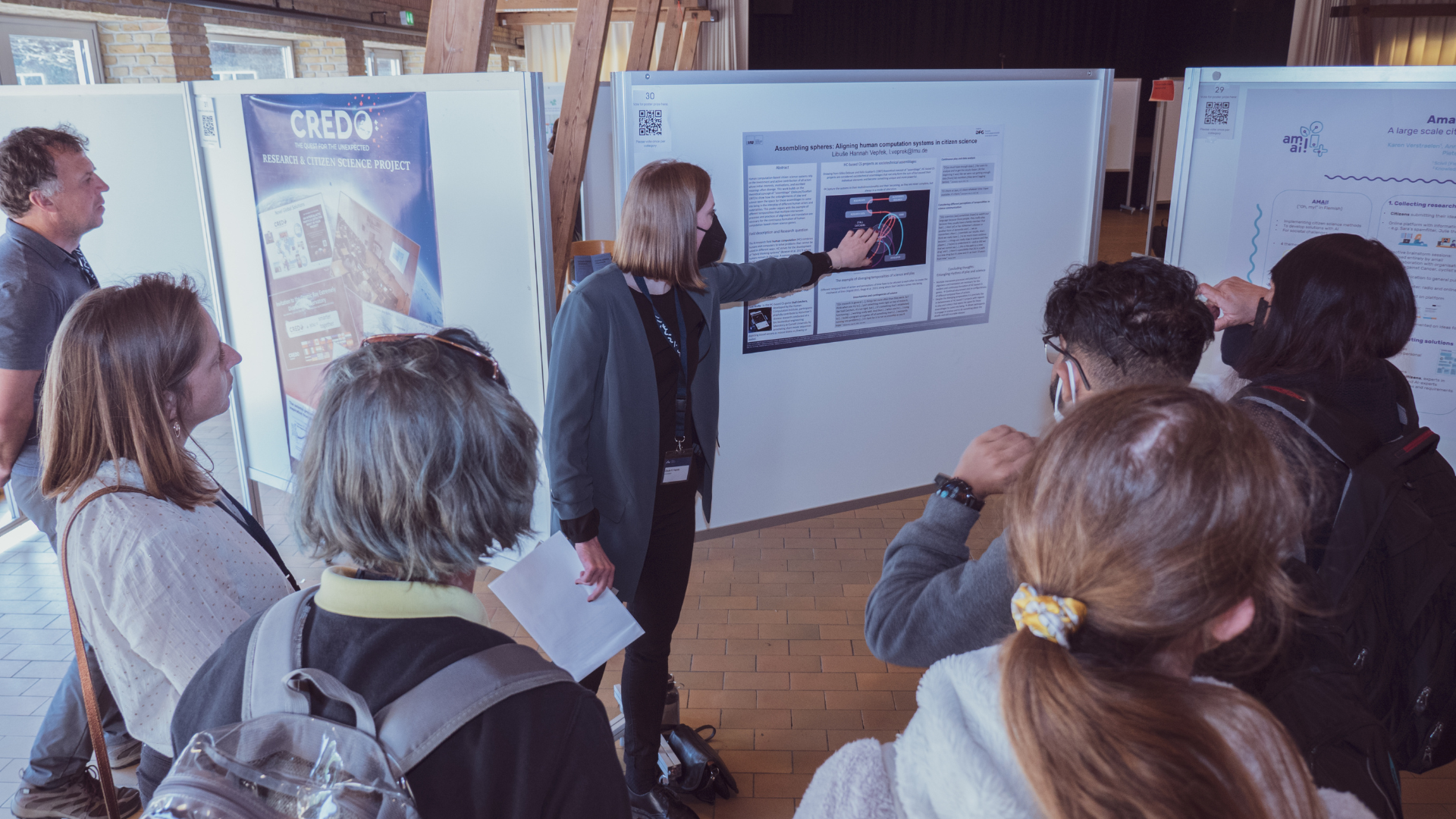You may have read about her on our blog before, or maybe even talked to her in the SC chat. Libuše Vepřek is an active HCI contributor and a PhD student in Cultural Anthropology at LMU Munich, Germany. She was recently recognized for her research as an ethnographer trying to understand HCI’s work at the "Engaging Citizen Science Conference 2022". The subject of her poster? It has a lot to do with you and with us.
Stall Catchers not only speeds up Alzheimer's research, it is also a framework that allows us to reflect on how humans and machines interact (particularly in the field of citizen science) and how we can keep improving these participatory systems to get even better results.
So, while you help us catch stalls, Libuše Vepřek has been studying from the inside how projects like SC can affect people's daily lives and how they perceive playing and doing science. To do this, she carries out an ethnographic study, that is based on participatory observation and interaction with those involved, such as catchers, developers and researchers.
Libuše actually visited our headquarters back in 2021 and got to chat with some of you, catchers! Some of the preliminary results of this experience were recently recognized at the Engaging Citizen Science Conference.
What is Libuše's award-winning poster about?
In "Assembling spheres: Aligning human computation systems in citizen science", Libuše analyzed Human Computation-based citizen science projects, such as Stall Catchers, as continuously evolving projects.
“Different actors—such as researchers, participants, designers and developers— bring different perspectives to the projects, ascribe different meanings to them and engage with each other as well as with technology and materialities (for example with the user interfaces, the data pipeline, the source code of Stall Catchers) in different ways. I analyze how these different perspectives and practices come together by especially focusing on the relations between different actors and materialities within the projects. Together, they continuously form human computation-based citizen science projects”, Libuše explains.
In a previous article, Libuše shared her process as “an ethnographic approach which allows focusing on the everyday application and development, and the various practices around human computation-based citizen science projects. It includes participating in the projects themselves, observing daily practices, design and research behind these systems and conducting in-depth interviews. I had the opportunity to talk with some of you about your viewpoint on Stall Catchers, which was enlightening. Thanks again to all of you! It was not only a great experience to meet you all but also very valuable for my research”.
She is currently analyzing the materials she collected and slowly beginning the process of writing his thesis. However, if you want to learn more about it, check out the poster recap below!

Assembling spheres: Aligning human computation systems in citizen science (Libuše Hannah Vepřek, M.A., LMU Munich)
Human Computation systems combine the strength of humans and algorithms to jointly solve problems that neither can solve alone. This rapidly developing approach is especially successful in the field of citizen science, where it allows participants to contribute to research in ways that had not been conceivable before.
Here, projects are mostly designed as so-called games with a purpose (GWAP) (von Ahn/Dabbish 2008), in which participants generate surplus value for scientific research, as well as for "learning" AI algorithms, in a playful way. For these systems to fulfill their purpose, they rely heavily on the investment and active contribution of all parties—from the researchers to the developers and the participants—whose initial interests, motivations and ascribed meanings often diverge.
Based on ongoing ethnographic study of three different HC-based citizen science projects, this work analyzes how HC-based citizen science projects come into being in the interplay of different human actors and materialities.
What practices surround the human-machine interactions in particular? What meaning do the different stakeholders ascribe to their own roles and the systems they are participating in? Building on Gilles Deleuze and Felix Guattari’s (1987) theoretical concept of “assemblage”, it considers these systems as sociotechnical assemblages that not only form the sum of, but exceed their individual elements and become something unique and more powerful.
This perspective allows capturing the systems not only in their multidimensionality, but also in their becoming, as they are never complete, but always in a mode of alteration. Here, this work argues, it is precisely the in-betweenness with regards to play and science that opens the space for these assemblages.
As it becomes clear, multiple interwoven processes and practices of alignment and translation—specifically across the spheres of software and infrastructures, narrative and vision, and engagement and care—are necessary for the resilient and continuous formation of HC-based citizen science games.

